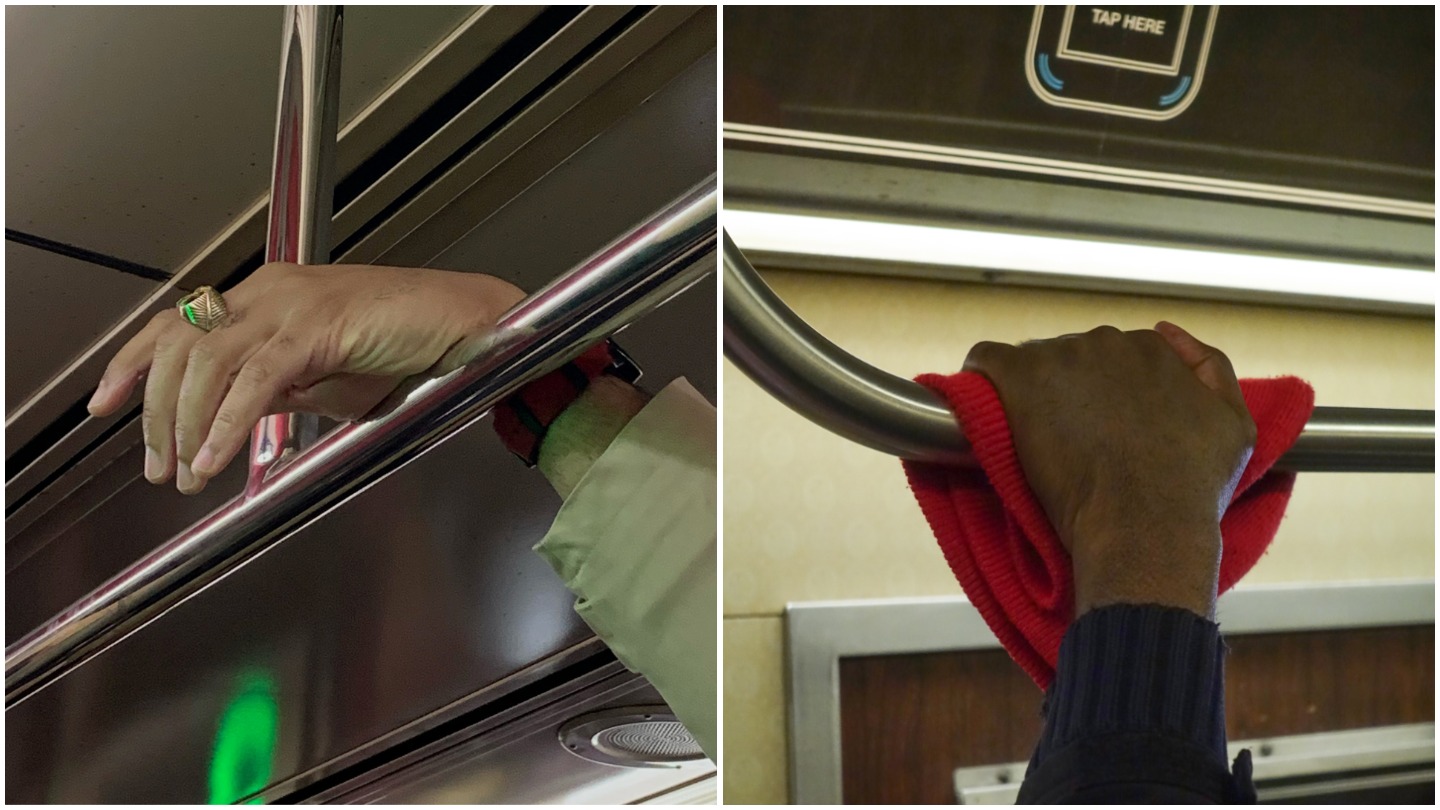When Hannah La Follette Ryan first moved to New York, she developed what she describes as an “anthropological interest” in its inhabitants. Her commute between Brooklyn and Manhattan, where she worked as a nanny, meant that she spent a large amount of time travelling by public transport. “Riding the subway leaves this indelible impression on a person,” she says. “It’s a very polarising, shared experience.”
Soon after her move, Hannah started an Instagram account where she posted anonymous photos of people’s hands on the subway: @subwayhands has hands clutching onto a handbag, curled on top of a glittery skirt, a smaller palm wrapped tightly into a larger one. “It’s confirmed my suspicions that hands can give away as much as faces,” says the photographer. The images, despite how little they tell the viewer about the person the hands belong to, are strikingly intimate.
Public transport has been a fertile ground for photographers for years, particularly in cities that seem to be constantly in motion. In Nick Turpin’s Night Bus series, he photographed faces behind misted windows in London, barely visible. In New York in the ’90s, Christophe Agou discreetly took black and white photographs, often with the subject off-centre. Andrew Wagner’s book of tender black and white photos of the subway, released two years ago, demonstrates the way that communities can cluster on public transport, the snippets of other people’s lives that you become privy to through chance.
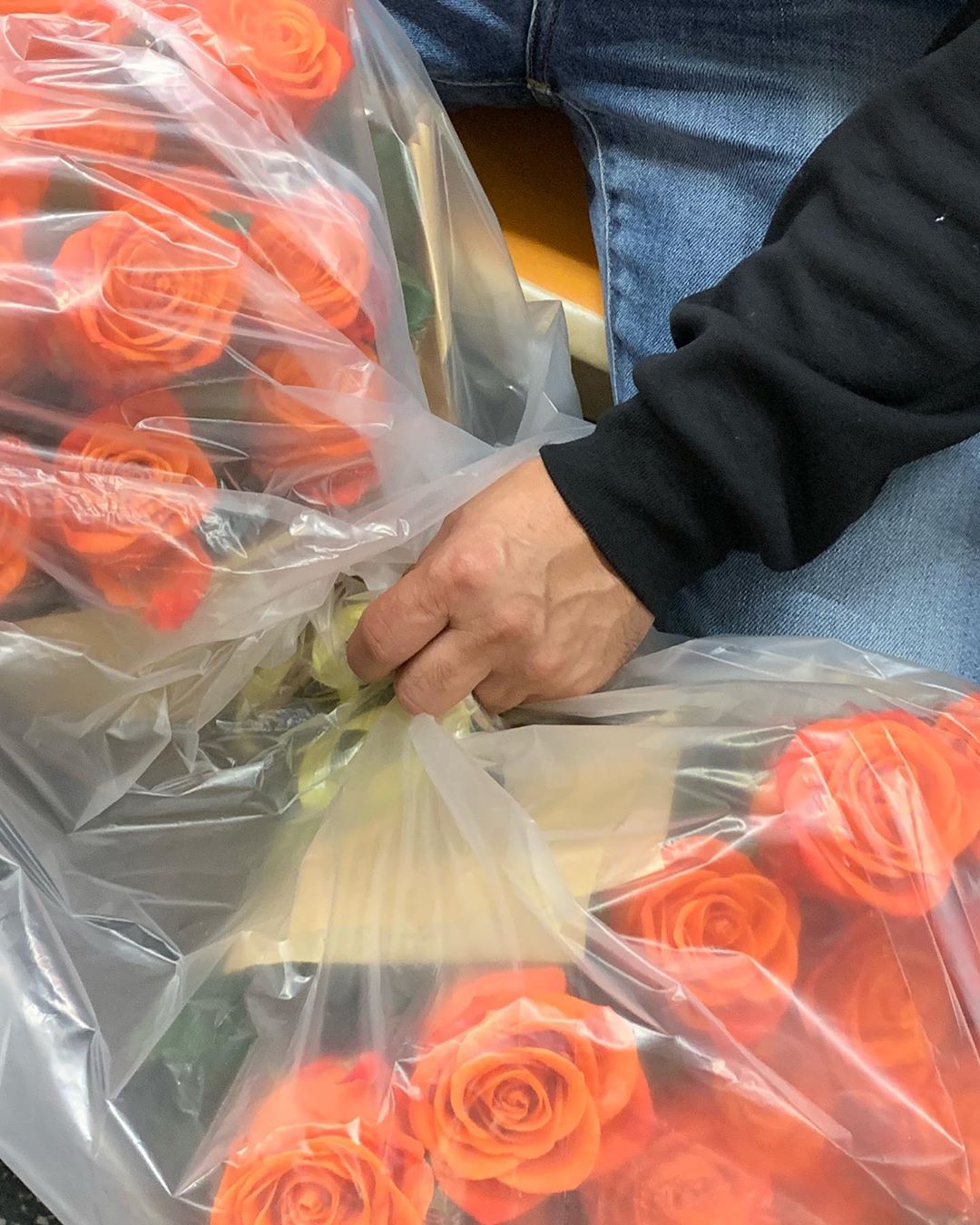
In the same way, Hannah’s photographs depict slivers of life as it’s lived, subconsciously. On @subwayhands, you can follow the changing of the seasons, an unspoken mood — a photo from spring last year, is of two hands, crossed behind a red knit, holding the remnants of an ice cream cone. In another, a man holds on tightly to a gauzy bag of red roses, like a still life. One video shows a person practising sheet music on their thigh, drumming a rhythm on their thighs.
“I was reacting to a certain style of street photography that seeks out striking and unusual faces, and ignores everyone else,” she says. “I wanted a different approach to what makes someone interesting to photograph.” She posted the first photo to the account in 2014 — it now has amassed 224,000 followers. The images, though simple, clearly resonate with people, who often tag their friends in the comments. For example, users had some particularly strong opinions on one photo of a person bending back the pages of a book, uh, pretty intensely.
Even though Hannah’s photos are all shot specifically in New York, the behaviour they demonstrate seems universal — hands crossed over a bag, untangling headphones, tracing a line’s route down a transit map. While her project’s subject matter may seem unconventional, Hannah points out that she’s “scanning for the usual suspects: light, gesture, colour, emotion, personality.” Hannah uses her iPhone to take photos, often constrained by the knowledge that her subject could exit her shoot at a moment’s notice. “That attention to detail has taught me a photo can be complete without the ‘decisive moment’,” she says. “I’ve learned how you can, with luck, anticipate a strong picture by closely observing body language.”
Spending so much time on the subway — and paying attention to the minutiae of people’s interactions with others, the gestures that they make when they’re waiting or nervous — has led Hannah to notice the near-imperceptible ways that people’s behaviour can change. “It’s a habit and a ritual for me,” she says. “In the wake of the death of a beloved public figure, I’ll see people reading their books — when Anthony Bourdain died, I saw his memoir for months after.”
Those instincts proved to be prescient in recent months, as fears around COVID-19 started to set in. Hannah noticed that there were clear signs of that anxiety from February. “Towards the end of that month it was standard to see people holding the subway pole with a napkin or a coat sleeve,” she says. “The last day I rode the subway was March 11th, when I was on assignment. Each day of that week, it felt like the general anxiety and intensity of riding the subway was increasing by an order of magnitude.”
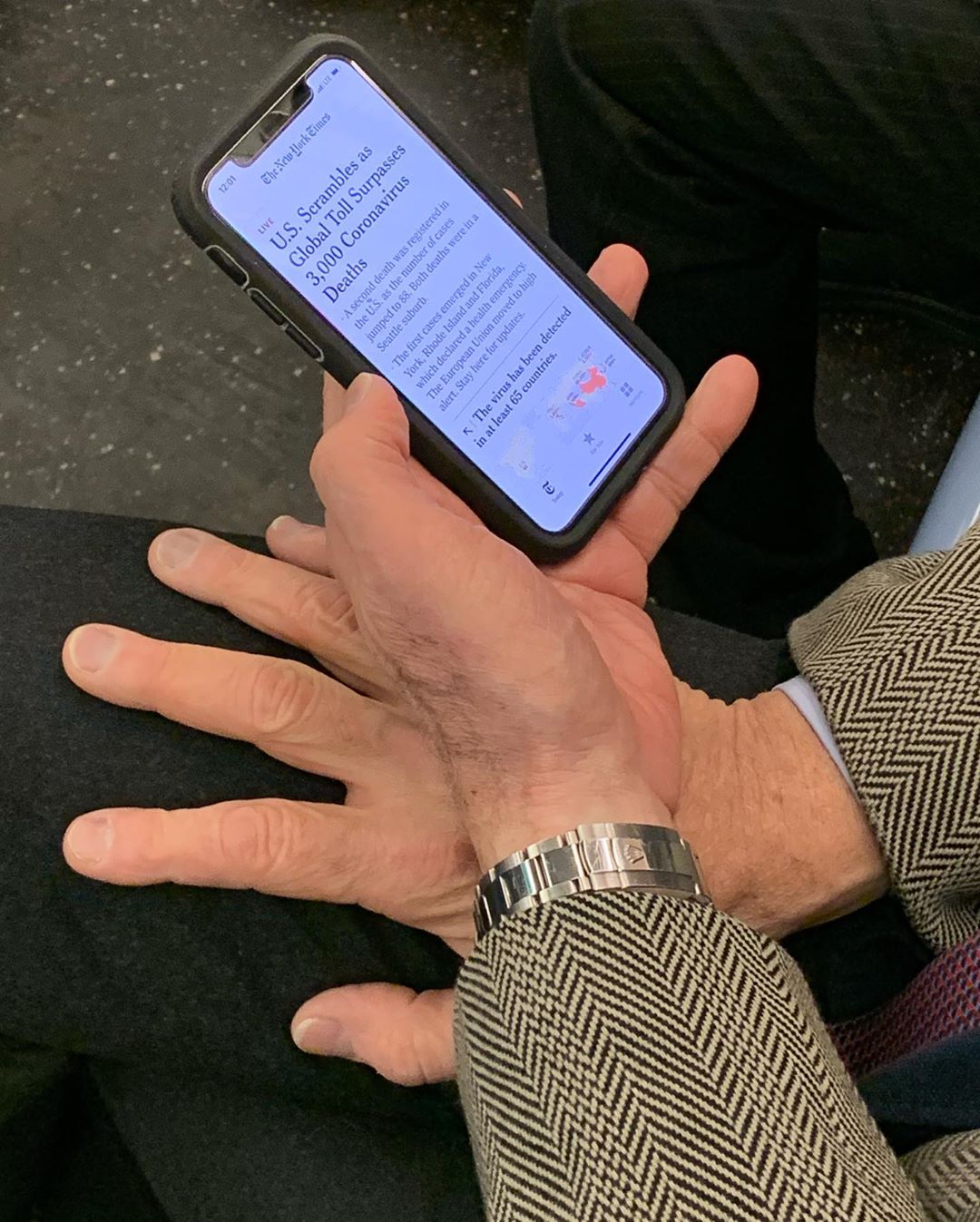
One of Hannah’s images from March is one of someone reading a New York Times headline on their phone; the word “coronavirus” draws the eye immediately. By this time, cities around the world were starting to go into partial or full lockdowns.
An eerie photo of Times Square — empty, but with glitzy billboards still flashing — depicts how seismic the changes sweeping through contemporary life are. Scrolling through the @subwayhands grid feels like moving backwards in time. Eventually, pocket-sized bottles of hand sanitiser started to emerge, and more of the hands on the account were wearing latex gloves. One week, there was a tender photo of two pairs of hands, clutching on tightly to each other. In the next, a carousel of videos of people sanitising their hands, from young to old, all going through the same vigorous motions. “The change in behaviour was abrupt,” she says.
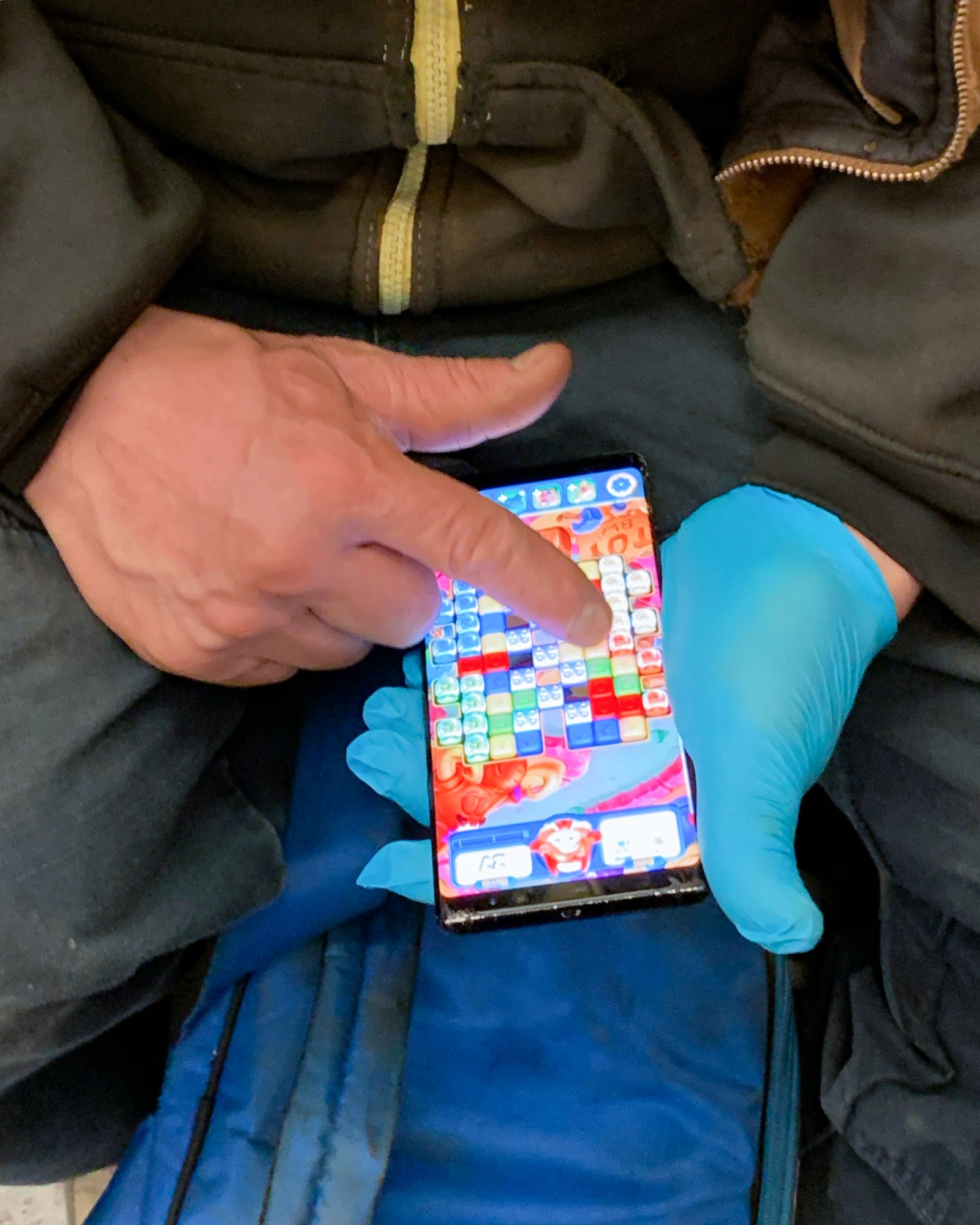
In the same way that poetry on tube and train carriages brings a new dimension to otherwise routine activities, Hannah’s work suggests that there’s something just beyond the normal in everyday life. On the subway, everyone is a subject. For the foreseeable future, that work has been put on hold indefinitely; the public that Hannah relied on to fill her images have been pushed behind closed doors. But nearly everyone working in a creative industry is feeling the impact of this. For performers like drag queens, musicians, actors, but also technicians, and production assistants, work is reliant on being in close proximity to other people.
“The photos I take on the subway are quite close and intimate,” says Hannah. “When I’m shooting off the subway, my instinct is to take advantage of the relative freedom and space. So I’m reconsidering what draws me to the pictures that I make.”
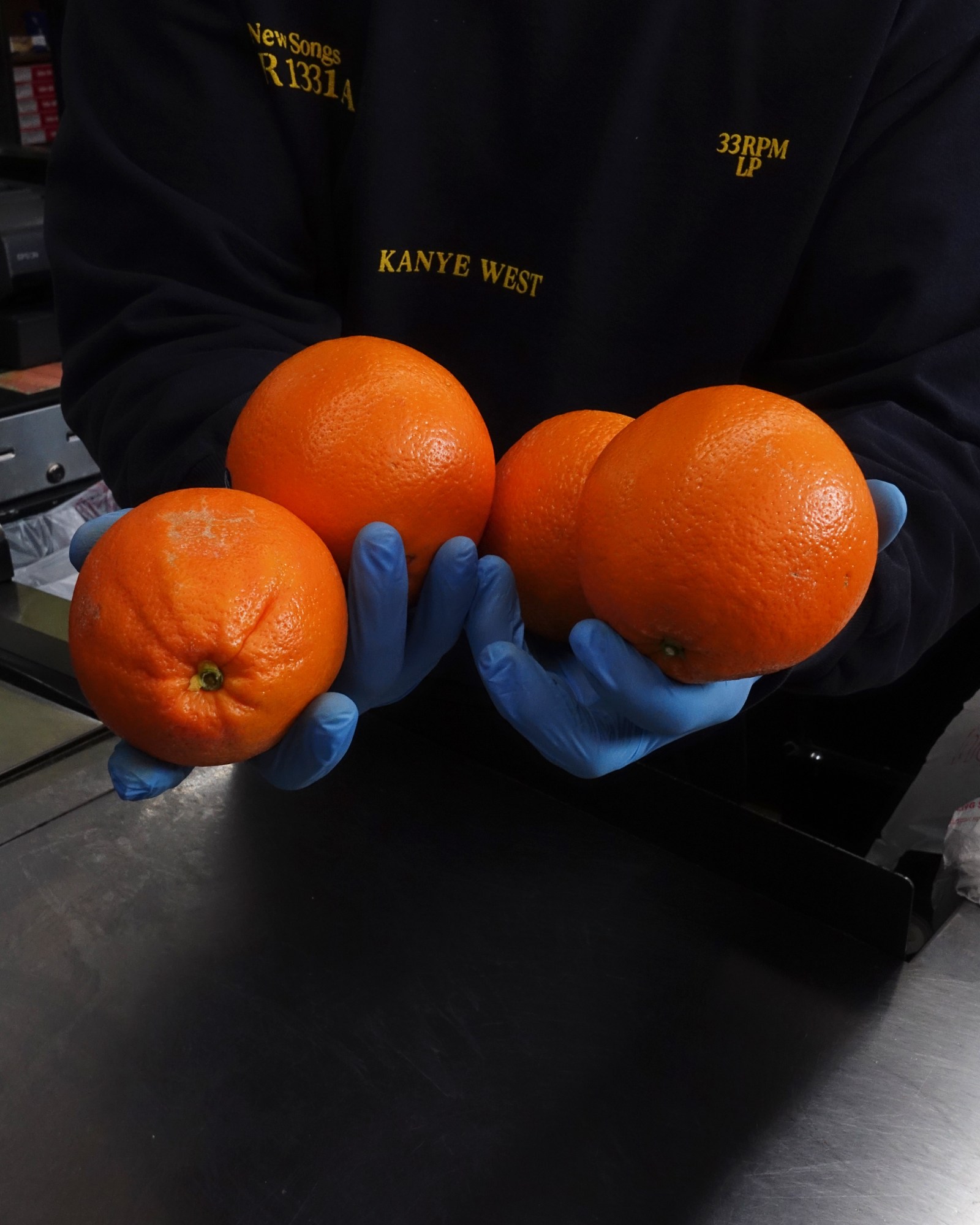
With the project on indefinite hiatus, Hannah has started taking meandering walks through her neighbourhood. On her personal account, she’s posting what she sees. One photo is of a grocery store cashier, the bright blue of protective gloves in sharp contrast to three oranges. “The relative quiet of my residential neighbourhood in Brooklyn is an interesting foil to the chaos of the subway,” she remarks.
Even so, when social distancing measures are relaxed, Hannah knows exactly what she wants to do first. “I miss it terribly. The first thing I’m going to do is take the 1 train, which is controversially my favourite,” she says. “I love it when it goes above ground in Harlem and you catch a glimpse of the Hudson. I’ll ride it through the Bronx to Van Cortlandt Park, get a donut, and then make my way home.”
